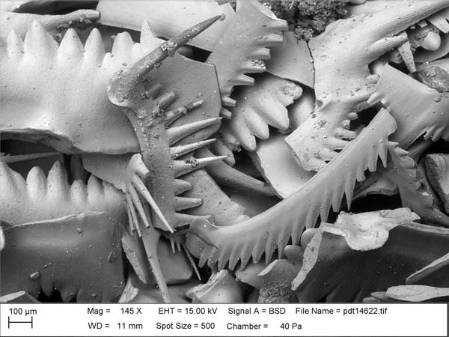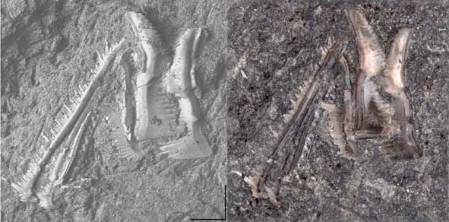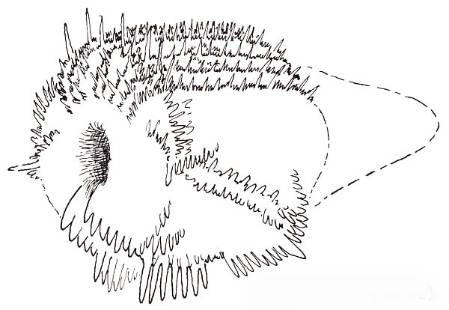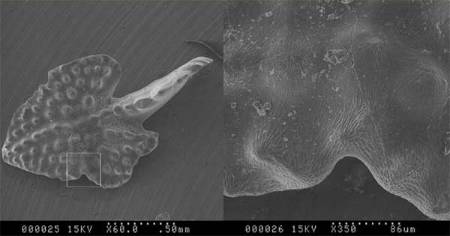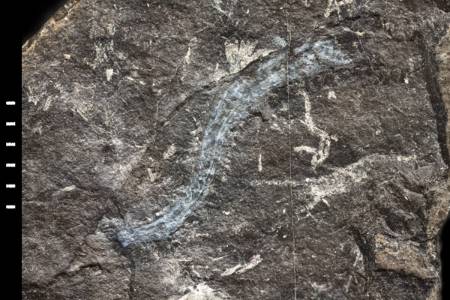You may have noticed that I haven't posted regularly to my blog over the last couple of months and that's because I've been in Malaysia visiting my Masters student Atilia Bashardin at the Universiti Teknologie, PETRONAS, where I have just been appointed a visiting lecturer. This and the next two posts will be an annotated series of pictures covering my visit to Malaysia, fieldwork, the university and even a few pictures showing what a lucky geologist eats while they are in the field!
Peninsular Malaysia does not, at first sight, look very promising for geologists as it is mainly flat, covered with palm oil plantations and paddy fields like this one above. Every now and again, amazing, imposing limestone hills rise from the flat landscape, while granites form a mountain backbone to the peninsular. As the granites formed beneath the surface of the earth, the heat given off metamorphosed the limestones, often turning them to marble. This gave them the hardness and resistance to erosion that causes them to stand out as we see them today.
Because the limestone hills are geographically isolated from each other and heated to varying temperatures depending on proximity to the granites, it is difficult to work out if they relate to the same rock formations based soley on descriptions of the rocks exposed.
Knowing the relative ages of the hills and the distribution of rock formations present is vital for reconstructing the geological history of the area. The area surrounding the Malaysian peninsular has a complex geological history and now consists of roughly north-south trending major crustal units or terraines that docked together at various stages through geological time.
Studying conodonts from these limestones can help to date the rock formations, give an idea of the environments in which they were deposited and even suggest the maximum temperature to which they have been heated.
It's important to be well fed while you are carrying out fieldwork. This curry lunch banquet above was served on a granite table lined with a bed of banana leaves. The food in this region is a delightful mix of Thai, Malay, Indian and Chinese, often combining these various tastes.
PhD student Haylay Tsegab (right) is pictured above with his supervisor Dr Aaron Hunter (left), who was my host for the duration of the trip. Aaron has volunteered at the Museum and previously held a short term curatorial position in our Palaeontology Department (now part of Earth Sciences at the Museum). He is also co-supervisor of our Masters student Atilia Bashardin. Haylay is studying the carbonate sedimentology of some of the limestone hills in the Kinta Valley where the city of Ipoh is situated.
During our first day in the field we visited one of Haylay's study sites at Sungai Siput. Here they are going to drill a borehole through a section of relatively unmetamorphosed limestone. The digger behind them was used to clear the path to an old quarry so that the drilling equipment could be transported to the site.
In the picture above, the hammer marks the approximate site where the borehole was due to be drilled a few days later. I took a sample for conodonts just to the left of the hammer in an attempt to date this succession of rocks that are believed to be Silurian age (approximately 415-440 million years old). I carried the 2kg sample home in my suitcase and it is now dissolving slowly in acetic acid (vinegar) in a lab down in the depths of the Palaeontology Building.
As well as dating the rock, it is hoped that the conodonts will be able to tell us the maximum temperature to which the rock has been heated: as conodonts are heated, they change from a pristine amber to black, grey and eventually white and these colour changes can be calibrated to show a maximum palaeo-temperature reading for the rock formation they came from. This is important as oil, gas and other minerals form under various temperature conditions.
The limestone above has a large number of calcite veins running through it. The quarry was originally set up to provide ornamental stones like this one. Usually for a field picture like this, I would include a lens cap, coin or finger for scale. However, I didn't want to spoil this image so you will have to believe me that the field of view is approximately 20cm across.
The sample selected during field work contained as few calcite veins as possible because conodonts from these types of samples are likely to be fragmented due to the stresses and strains that the rocks have been subjected to. This section is important as it is relatively unmetamorphosed and early indications suggest that the limestone is black because of its high organic content. This, as well as its accessibility, is why this site has been chosen for drilling as part of Haylay's studies.
One of the questions remaining to be answered is whether these organic-rich-rocks are a potential source for hydrocarbons? The colour of any conodonts found should be able to tell us the answer to this. Malaysia's oil has been obtained from much younger rocks offshore to the east of peninsular Malaysia and North Borneo, not from the region we are studying.
The 'path' shown above is a typical limestone exposure reached after a drive north to Kg Ujung Bukit, Perlis. Here we took a sample for Atilia's M.Sc. project to study conodonts from Silurian rocks of the mainland and Langkawi Island. The rocks here have been given the same formation name as those exposed on Langkawi Island to the west. The fact that two different names have traditionally been given to this formation, the Setul Limestone Formation and the Mampelan Limestone Formation, shows some of the issues with interpreting the geology of the region.
This is Aaron and Atilia after we had taken a sample of limestone that filled half of Atilia's rucksack. Usually conodont workers would take samples of at least a kilogramme in size and some have been known to take 50kg samples! Here we took about 5kg but didn't hang around for long after this picture was taken as we heard a snake in the undergrowth. We had probably disturbed it with our hammering!
We followed up various reports of small quarries and rock exposures which led us to a small, shallow, disused quarry at the back of a house. The owners and their children were very interested to see why Atilia appeared to be trying to put piece of rock from their back garden into a plastic bag! While I was writing this blog post, I heard from Atilia that this sample has yielded some conodonts. Sometimes it can take weeks or months for samples to dissolve in weak acids, in this case, acetic acid. The tiny conodont elements then have to be picked out individually from under a microscope with a fine paint brush in the lab.
Here we presumed that Atilia was trying to find out from the house owner if there are any more exposures of the limestone in the local area. Shortly after this, he led us to a quarry on his motorbike but sadly there was no limestone there. It may have already been quarried out. We did see some of the same rock lining a drainage ditch by the side of this road but resisted all temptation to sample it! It wouldn't have helped us as it was not part of an in-situ rock exposure so could have come from anywhere.
Atilia demonstrating how to remain well covered up during mid-day fieldwork while carrying another limestone sample.
It's important to remain hydrated while doing fieldwork in the humid conditions of South-East Asia. On most days there would be a large thunderstorm that cleared the air and, fortunately, we were never in the field during one of these. Most of these drinks shown above are iced water but usually we combined it with some lovely fruit juices and an occasional iced coffee.
I have attempted to set the scene for some of the geological problems that we are hoping to solve using conodonts. My next post will detail our trip to Langkawi Island in search of yet more conodonts and hopefully more answers to our questions.







